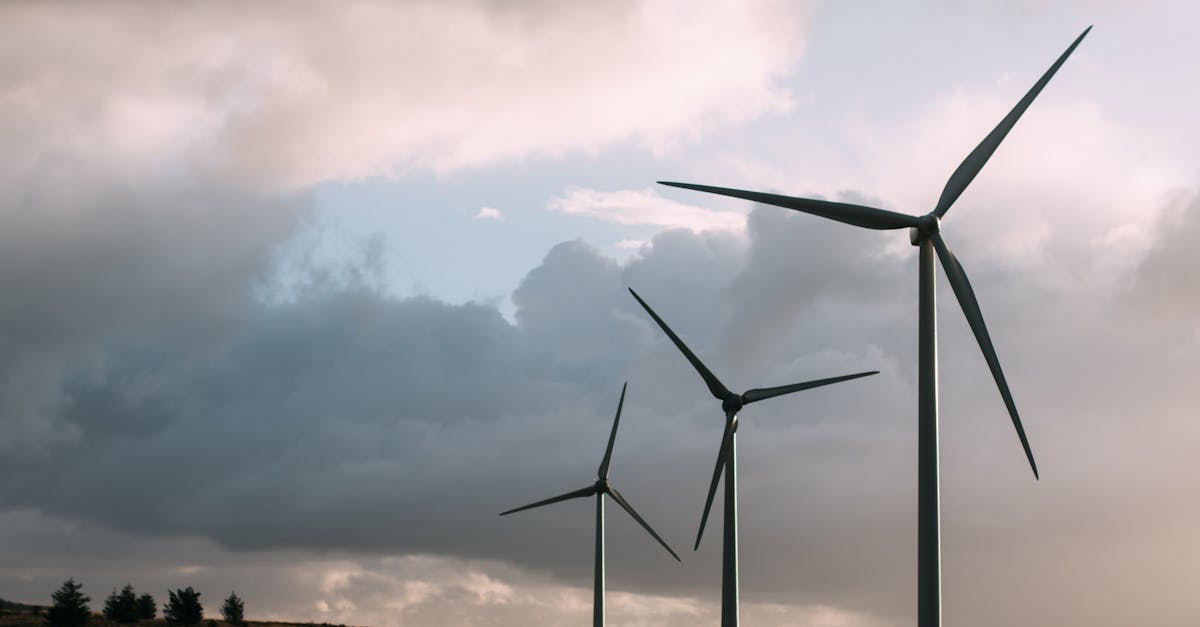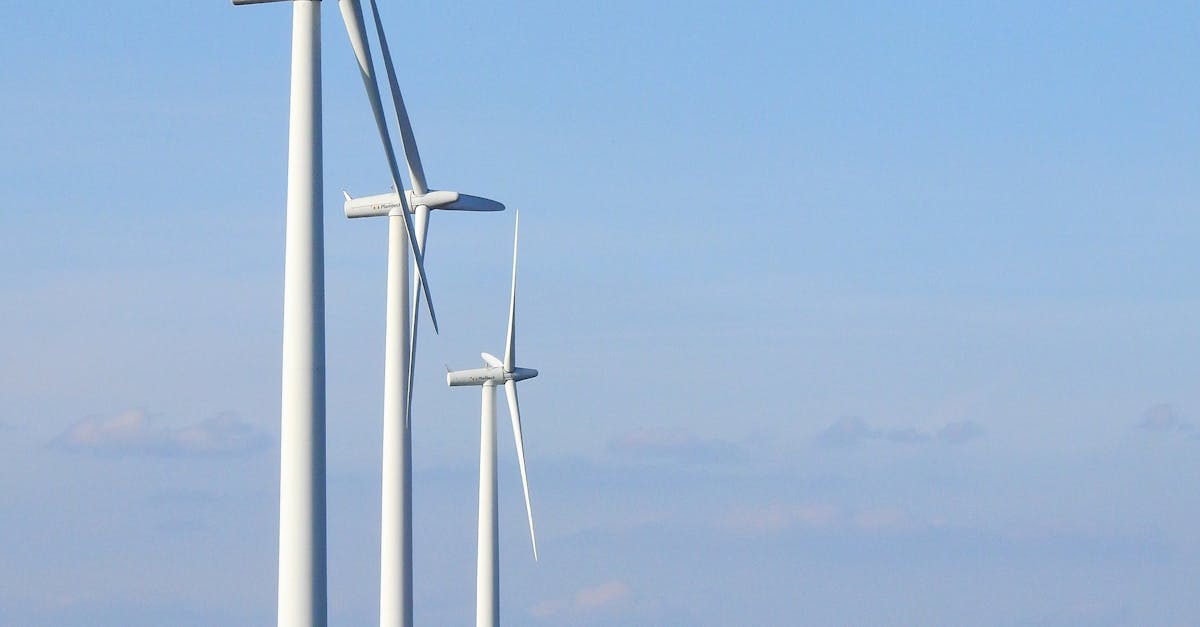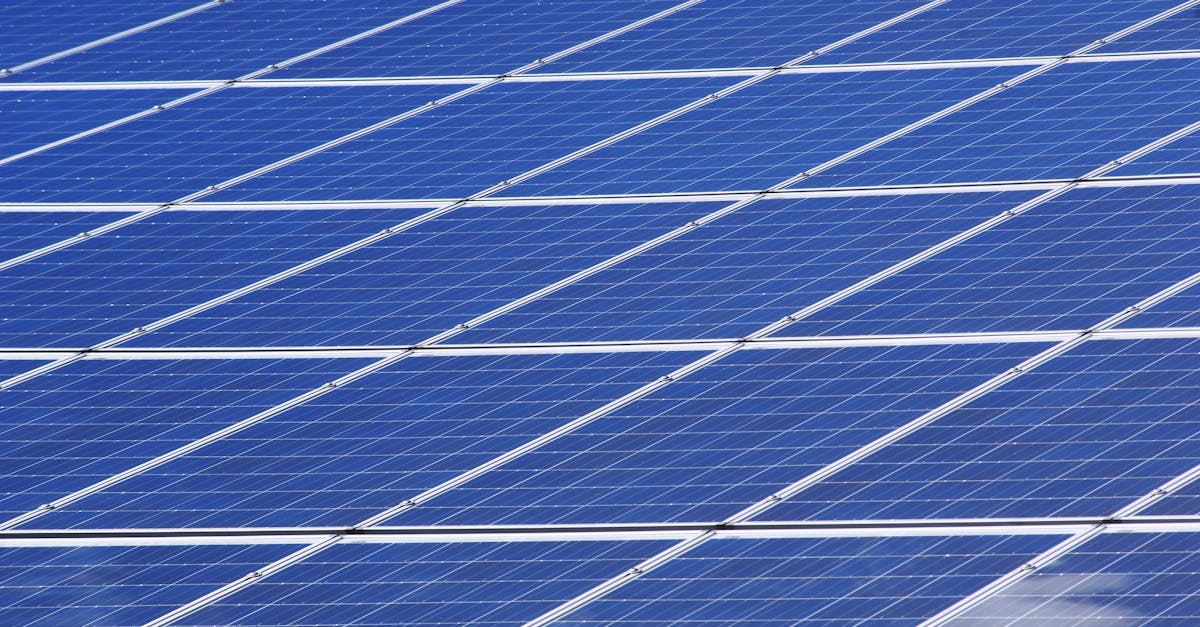Harnessing Nature’s Power: A Comprehensive Guide to Portable Solar Systems vs. Home Wind Turbine Kits

In a world growing increasingly aware of environmental concerns, the demand for sustainable energy solutions is on the rise. Among the most popular options are portable solar systems and home wind turbine kits, both offering unique advantages and applications. This comprehensive guide will delve into the potential of these renewable energy sources, comparing their benefits, efficiency, and environmental impact. Whether you’re seeking mobile convenience or a long-term investment, this article will empower you with the knowledge to harness nature’s energy and create a greener future.
1. Harnessing Nature’s Energy: Solar Systems and Turbines
Thank you for reading this post, don't forget to subscribe!
Harnessing Nature’s Energy: Solar Systems and Turbines
In the face of growing concerns about climate change and the depletion of fossil fuels, the world is turning to renewable energy sources to power our homes and businesses. Two of the most popular options are solar energy and wind energy, which can be harnessed through portable solar systems and home wind turbine kits, respectively.
Portable solar systems are a great option for people who want to generate their own electricity off the grid. These systems are typically small and easy to transport, making them ideal for camping, RVing, or other outdoor activities. Home wind turbine kits, on the other hand, are a more permanent solution for generating renewable energy. These kits typically include a wind turbine, a tower, and an inverter, and they can be installed in your backyard or on your roof.
Both portable solar systems and home wind turbine kits have their own advantages and disadvantages. Portable solar systems are more portable and versatile, but they are also less powerful than home wind turbine kits. Home wind turbine kits are more powerful and can generate electricity even when the sun is not shining, but they are also more expensive and require more maintenance.
2. Portable Solar Systems: Convenience and Freedom

Portable Solar Systems: Convenience and Freedom
Portable solar systems offer a convenient and versatile way to generate your own electricity, whether you’re off the grid or simply want to reduce your reliance on fossil fuels. These systems are typically small and lightweight, making them easy to transport and set up. They can be used to power a variety of devices, from small electronics to large appliances.
One of the biggest advantages of portable solar systems is their mobility. You can take them with you wherever you go, making them ideal for camping, RVing, boating, or any other outdoor activity. They are also a great option for people who live in areas with frequent power outages.
Portable solar systems are also very easy to use. Most systems come with a simple plug-and-play design, so you don’t need any special knowledge or skills to get started. Simply connect the solar panels to the battery, and you’re ready to start generating electricity.
Here are some of the most common applications for portable solar systems:
- Camping and RVing: Portable solar systems are a great way to power your RV or campervan, providing you with electricity for lights, appliances, and other devices.
- Boating and fishing: Portable solar systems can be used to power your boat’s electrical system, including the bilge pump, navigation lights, and fish finder.
- Tailgating and outdoor events: Portable solar systems can be used to power your tailgate party or other outdoor event, providing you with electricity for music, lights, and other devices.
- Emergency preparedness: Portable solar systems can be used to provide backup power in the event of a power outage or other emergency.
Benefits of Solar Panels: Efficiency and Versatility
Benefits of Solar Panels: Efficiency and Versatility
Solar panels are one of the most important components of a solar energy system. They are responsible for converting sunlight into electricity, which can then be used to power your home or business. The efficiency of a solar panel is measured by how much of the sunlight that hits the panel is converted into electricity.
The efficiency of solar panels has been increasing steadily over the years. Today, the most efficient solar panels on the market have an efficiency of over 20%. This means that they can convert over 20% of the sunlight that hits them into electricity.
In addition to their high efficiency, solar panels are also very versatile. They can be used in a variety of applications, including:
- Residential solar systems: Solar panels can be used to generate electricity for your home, reducing your reliance on the grid and saving you money on your energy bills.
- Commercial solar systems: Solar panels can be used to generate electricity for businesses, reducing their operating costs and improving their sustainability.
- Off-grid solar systems: Solar panels can be used to generate electricity for off-grid homes and businesses, providing them with a reliable source of power.
Solar panels are a clean, renewable source of energy that can help you save money on your energy bills and reduce your carbon footprint. If you are considering installing a solar energy system, be sure to choose high-efficiency solar panels to get the most out of your investment.
Types of Portable Solar Systems: Monocrystalline vs. Polycrystalline
Types of Portable Solar Systems: Monocrystalline vs. Polycrystalline
There are two main types of solar panels used in portable solar systems: monocrystalline and polycrystalline. Monocrystalline solar panels are made from a single crystal of silicon, while polycrystalline solar panels are made from multiple crystals of silicon.
Monocrystalline solar panels are more efficient than polycrystalline solar panels, meaning they can convert a higher percentage of sunlight into electricity. They are also more durable and have a longer lifespan. However, monocrystalline solar panels are also more expensive than polycrystalline solar panels.
Polycrystalline solar panels are less efficient than monocrystalline solar panels, but they are also less expensive. They are also more resistant to breakage, making them a good choice for portable solar systems that will be subjected to rough use.
Here is a table comparing the key features of monocrystalline and polycrystalline solar panels:
| Feature | Monocrystalline | Polycrystalline | |—|—|—| | Efficiency | 15-20% | 13-16% | | Durability | High | Good | | Lifespan | 25-30 years | 20-25 years | | Cost | High | Low |
When choosing between monocrystalline and polycrystalline solar panels for your portable solar system, consider your budget, your efficiency needs, and the durability requirements of your system.
3. Home Wind Turbine Kits: A Sustainable Investment
Home Wind Turbine Kits: A Sustainable Investment
Home wind turbine kits are a great way to generate your own renewable energy and reduce your reliance on the grid. These kits typically include a wind turbine, a tower, and an inverter, and they can be installed in your backyard or on your roof.
Wind turbines work by converting the kinetic energy of the wind into electrical energy. The amount of electricity that a wind turbine can generate depends on the size of the turbine, the wind speed, and the efficiency of the turbine.
Home wind turbine kits can be a cost-effective way to generate renewable energy. The average cost of a home wind turbine kit is between $5,000 and $10,000, and the average payback period is 5 to 10 years. However, the payback period can be shorter if you live in an area with high wind speeds.
In addition to being cost-effective, home wind turbine kits are also environmentally friendly. Wind turbines do not produce any emissions, and they do not require any fuel to operate. This makes them a sustainable source of energy that can help you reduce your carbon footprint.
Here are some of the most common applications for home wind turbine kits:
- Residential wind turbines: Home wind turbines can be used to generate electricity for your home, reducing your reliance on the grid and saving you money on your energy bills.
- Commercial wind turbines: Home wind turbines can be used to generate electricity for businesses, reducing their operating costs and improving their sustainability.
- Off-grid wind turbines: Home wind turbines can be used to generate electricity for off-grid homes and businesses, providing them with a reliable source of power.
If you are considering installing a home wind turbine kit, be sure to do your research and choose a kit that is right for your needs.
Understanding Wind Turbines: Types and Efficiency
Understanding Wind Turbines: Types and Efficiency
Wind turbines are classified into two main types: horizontal axis wind turbines (HAWTs) and vertical axis wind turbines (VAWTs). HAWTs are the most common type of wind turbine, and they consist of a rotor with blades that rotate around a horizontal axis. VAWTs, on the other hand, have blades that rotate around a vertical axis.
HAWTs are more efficient than VAWTs, and they are also more common because they are easier to manufacture and install. However, VAWTs have some advantages over HAWTs, such as the ability to operate in turbulent wind conditions and the ability to be placed closer to the ground.
The efficiency of a wind turbine is measured by how much of the wind’s kinetic energy it can convert into electricity. The efficiency of a wind turbine depends on a number of factors, including the size and shape of the blades, the speed of the wind, and the design of the turbine.
The size of the blades is one of the most important factors affecting the efficiency of a wind turbine. Larger blades can capture more wind energy, and they can also generate more electricity. However, larger blades are also more expensive to manufacture and install.
The speed of the wind is another important factor affecting the efficiency of a wind turbine. Wind turbines are most efficient when the wind speed is between 10 and 25 miles per hour. However, wind turbines can still generate electricity at wind speeds below and above this range.
The design of the turbine is also important. The shape of the blades, the number of blades, and the angle of the blades all affect the efficiency of the turbine.
Wind turbines are a clean and renewable source of energy, and they can help to reduce our reliance on fossil fuels. However, it is important to understand the different types of wind turbines and the factors that affect their efficiency before investing in a wind turbine.
Site Assessment for Wind Turbines: Maximizing Output
Site Assessment for Wind Turbines: Maximizing Output
Before you install a wind turbine, it is important to conduct a site assessment to determine if the site is suitable for wind turbine development. A site assessment will help you to identify potential obstacles, such as trees, buildings, and other structures, and it will also help you to determine the wind speed and turbulence at the site.
Wind speed is one of the most important factors to consider when siting a wind turbine. The wind speed at the site will determine how much electricity the turbine can generate. The ideal wind speed for a wind turbine is between 10 and 25 miles per hour. However, wind turbines can still generate electricity at wind speeds below and above this range.
Turbulence is another important factor to consider when siting a wind turbine. Turbulence can cause the wind turbine to vibrate and make noise. It can also reduce the efficiency of the turbine. The ideal site for a wind turbine is one with low turbulence.
Potential obstructions are another factor to consider when siting a wind turbine. Obstructions, such as trees, buildings, and other structures, can block the wind and reduce the efficiency of the turbine. It is important to choose a site that is free of obstructions.
A site assessment will help you to identify the best possible site for your wind turbine. By considering factors such as wind speed, turbulence, and potential obstructions, you can maximize the output of your wind turbine.
4. Cost Comparison: Solar vs. Wind Energy

Cost Comparison: Solar vs. Wind Energy
The cost of a solar energy system or a wind turbine system can vary depending on a number of factors, including the size of the system, the type of equipment used, and the complexity of the installation. However, in general, solar energy systems are less expensive than wind turbine systems.
Upfront investment
The upfront investment for a solar energy system is typically lower than the upfront investment for a wind turbine system. This is because solar panels are less expensive than wind turbines. However, the upfront investment for a solar energy system can still be significant, especially if you need a large system to meet your energy needs.
Installation expenses
The installation expenses for a solar energy system are typically lower than the installation expenses for a wind turbine system. This is because solar panels can be installed on rooftops or in open fields, while wind turbines require a tower and a foundation.
Ongoing maintenance
The ongoing maintenance costs for a solar energy system are typically lower than the ongoing maintenance costs for a wind turbine system. Solar panels require very little maintenance, while wind turbines require regular maintenance to ensure that they are operating safely and efficiently.
Overall
The overall cost of a solar energy system is typically lower than the overall cost of a wind turbine system. However, the best way to determine which type of system is right for you is to get quotes from multiple installers and compare the costs.
Here is a table comparing the upfront investment, installation expenses, and ongoing maintenance costs for solar energy systems and wind turbine systems:
| Cost | Solar Energy System | Wind Turbine System | |—|—|—| | Upfront investment | $5,000-$25,000 | $10,000-$50,000 | | Installation expenses | $1,000-$5,000 | $5,000-$15,000 | | Ongoing maintenance | $100-$500 per year | $500-$1,500 per year |
5. Environmental Impact: Embracing Sustainability
Environmental Impact: Embracing Sustainability
Portable solar systems and home wind turbine kits are both environmentally friendly ways to generate electricity. These systems do not produce any emissions, and they do not require any fossil fuels to operate. This makes them a sustainable alternative to traditional energy sources, such as coal and natural gas.
Reducing carbon footprint
One of the biggest benefits of portable solar systems and home wind turbine kits is that they can help to reduce your carbon footprint. Carbon footprint is a measure of the amount of greenhouse gases that are released into the atmosphere as a result of your activities. Greenhouse gases trap heat in the atmosphere, causing the planet to warm.
By using portable solar systems and home wind turbine kits, you can reduce your reliance on fossil fuels and reduce your carbon footprint. This can help to mitigate the effects of climate change and create a more sustainable future.
Promoting clean energy
Portable solar systems and home wind turbine kits also promote the use of clean energy. Clean energy is energy that is produced from renewable sources, such as the sun and the wind. Renewable energy sources do not produce any emissions, and they are not finite.
By using portable solar systems and home wind turbine kits, you can help to promote the use of clean energy and reduce our reliance on fossil fuels. This can help to create a cleaner and more sustainable future for all.
6. Choosing the Right System: A Tailored Approach

Choosing the Right System: A Tailored Approach
When choosing between a portable solar system and a home wind turbine kit, there are a number of factors to consider, including your energy needs, budget, installation requirements, and environmental factors.
Energy needs
The first step in choosing a renewable energy system is to determine your energy needs. How much electricity do you use each month? What appliances do you use? Once you know your energy needs, you can start to compare the different types of systems available.
Budget
The cost of a renewable energy system can vary depending on the size of the system, the type of equipment used, and the complexity of the installation. It is important to set a budget before you start shopping for a system.
Installation requirements
Some renewable energy systems are easier to install than others. Portable solar systems, for example, can be installed by anyone with basic DIY skills. Wind turbines, on the other hand, require a tower and a foundation, which can be more difficult to install.
Environmental factors
The environmental factors at your site will also affect the type of renewable energy system that you choose. For example, if you live in an area with high winds, a wind turbine may be a good option. If you live in an area with limited sunlight, a solar energy system may be a better choice.
External Link Resource: Department of Energy’s Guide to Renewable Energy
The Department of Energy’s Guide to Renewable Energy provides a comprehensive overview of the different types of renewable energy systems available. This guide can help you to make an informed decision about the best type of system for your needs.
7. Empowering the Future: The Power of Renewable Energy
Empowering the Future: The Power of Renewable Energy
Renewable energy sources, such as solar and wind energy, are becoming increasingly important as we move towards a more sustainable future. Portable solar systems and home wind turbine kits are two great ways to harness the power of renewable energy and reduce your reliance on fossil fuels.
Portable solar systems are a great option for people who want to generate their own electricity off the grid. These systems are typically small and easy to transport, making them ideal for camping, RVing, or other outdoor activities. Home wind turbine kits, on the other hand, are a more permanent solution for generating renewable energy. These kits typically include a wind turbine, a tower, and an inverter, and they can be installed in your backyard or on your roof.
Both portable solar systems and home wind turbine kits have their own advantages and disadvantages. Portable solar systems are more portable and versatile, but they are also less powerful than home wind turbine kits. Home wind turbine kits are more powerful and can generate electricity even when the sun is not shining, but they are also more expensive and require more maintenance.
Ultimately, the best way to choose between a portable solar system and a home wind turbine kit is to consider your individual needs and budget. If you need a portable and versatile system, a portable solar system may be a good option. If you need a more powerful and permanent system, a home wind turbine kit may be a better choice.
No matter which type of system you choose, you can be confident that you are making a positive impact on the environment. Renewable energy sources are clean, sustainable, and they do not produce any emissions. By embracing renewable energy, we can create a brighter and more sustainable future for ourselves and for generations to come.
What is the difference between a monocrystalline and a polycrystalline solar panel?
Monocrystalline solar panels are made from a single crystal of silicon, while polycrystalline solar panels are made from multiple crystals of silicon. Monocrystalline solar panels are more efficient and durable than polycrystalline solar panels, but they are also more expensive.
What is the best way to choose between a portable solar system and a home wind turbine kit?
The best way to choose between a portable solar system and a home wind turbine kit is to consider your individual needs and budget. If you need a portable and versatile system, a portable solar system may be a good option. If you need a more powerful and permanent system, a home wind turbine kit may be a better choice.
Are renewable energy systems difficult to install?
The difficulty of installing a renewable energy system depends on the type of system you choose. Portable solar systems are relatively easy to install, while home wind turbine kits can be more complex to install. However, there are many resources available to help you install a renewable energy system, such as online tutorials and professional installers.
How much money can I save by using a renewable energy system?
The amount of money you can save by using a renewable energy system depends on a number of factors, such as the size of your system, the amount of sunlight or wind you have at your location, and your local energy rates. However, many people who install renewable energy systems find that they can save hundreds of dollars on their energy bills each year.
What are the environmental benefits of using renewable energy?
Renewable energy sources do not produce any emissions, which helps to reduce air pollution and climate change. Renewable energy sources are also sustainable, meaning that they will not run out in the future.
Quiz
- Which of the following is NOT an advantage of using renewable energy sources?
(a) Reduced air pollution (b) Sustainability (c) Lower energy bills (d) Increased reliance on fossil fuels
-
True or False: Monocrystalline solar panels are less efficient than polycrystalline solar panels.
-
What is the most important factor to consider when choosing between a portable solar system and a home wind turbine kit?
(a) Cost (b) Energy needs (c) Installation requirements (d) Environmental factors
- Which of the following is NOT a potential application for portable solar systems?
(a) Camping (b) RVing (c) Off-grid living (d) Industrial manufacturing
- True or False: Wind turbines can generate electricity even when the sun is not shining.
Answer Key
- (d) Increased reliance on fossil fuels
- False
- (b) Energy needs
- (d) Industrial manufacturing
- True




